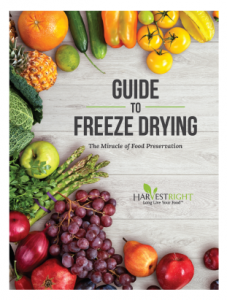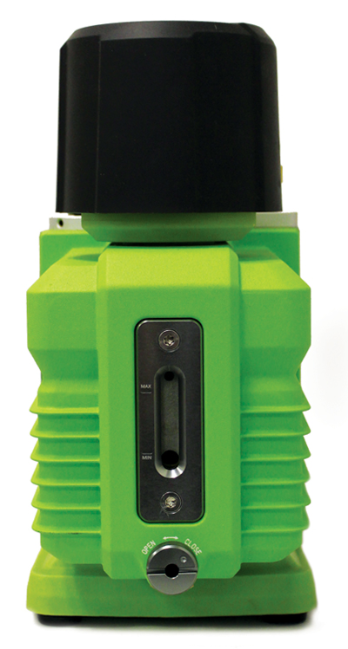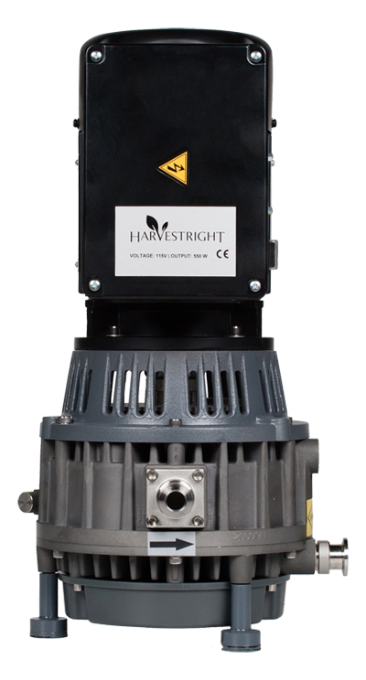Canning, as a way of food preservation, was invented by in the late 1800’s. It has been a popular method for preserving fruits, vegetables, and meats for hundreds of years. However, in the 20thcentury, a relatively new preservation method called freeze drying appeared on the scene.
Freeze drying technology first began to be used by the US Military during WWII to help get fresh medications and food to the troops in Europe without spoiling. Eventually NASA adopted the technology for their astronaut programs; and scientists continued using the amazing technology for research purposes. Then, in the last decade of the 20thcentury, pharmaceutical companies and other businesses got involved in producing selling freeze dried drugs and food to the public.
Although freeze drying is a far superior method of preserving food and drugs, the technology has been enormously complicated and expensive for many years. Happily, Harvest Right is now able to affordably offer this amazing technology to families and small businesses. This preservation method is far better than canning, better than dehydrating, and even better than freezing itself.
Canning is Hard Work! Anyone who has canned at home understands that it takes a lot of hard work. It’s hot, it’s messy, and it requires attention to detail. Freeze drying is far easier. Simply place the food on stainless steel trays, slide them into the Harvest Right freeze dryer chamber, and press start. The rest of the process is automatic. Approximately 24 hours later, the freeze dryer, having sensed that the food is dry, lets you know that you can remove the food—the process is complete.

Nutrition Three things destroy food and its nutritional value: heat, oxygen, and water. When a traditional canning method is used to preserve, the food is heated to destroy or hinder the growth of microorganisms, such as molds, yeast and bacteria. These organisms may be present in the soil, on the food, in the air, on equipment or on work surfaces. Yeasts, molds and bacteria must be destroyed during processing to prevent the food from spoiling. The correct amount of time to process varies with the kind of food. Sufficient heat for a specified length of time kills microorganisms and insures a safe product.
Preventing enzymatic changes in food is another concern when preserving food. Enzymes are chemical substances found in all animals and plants. These enzymes aid in the maturing and ripening processes. They also aid in the digestion of food and help get the nutrients into the blood stream.
However, in canned food these enzymes must be destroyed or inactivated as they will cause changes in color, flavor, and texture. Therefore, in the canning process, enzymes are destroyed by heat. However, it’s a two-edged sword. On one hand, destroying the enzymes is good, as it will allow the canned food to keep some of its color, flavor, and texture. On the other hand, the enzymes that help with digestion are lost.
Heat used in canning is a big problem. In addition to killing enzymes, heat also destroys the nutritional value of the food. When the canning process is complete, the food only has about 40% of its original nutritional value. And, because there is some oxygen and water in the container with the food, it will deteriorate and generally be unusable in 2 to 4 years.

The wonder of a Harvest Right freeze dryer is that it solves all the issues associated with heat, oxygen, and water that cause food to go bad. Freeze drying removes the water from the food in a very cold environment. When the water is removed, it stops the growth of germs and bacteria. Because heat is not used to destroy these organisms, the food is not cooked and no nutritional value is lost. Once the food has been freeze dried, it is placed in a container with an oxygen absorber and sealed. With proper packaging, the food can remain in its perfect nutritional state for 15 to 25 years or more. It will almost last indefinitely. And even better, the food will taste as fresh as it did the day it was freeze dried.

Food Dangers When canning, a boiling water-bath canner is used for fruits, tomatoes, and pickled vegetables. These acid-containing foods may be processed safely in boiling water for a specified length of time, depending on altitude. A pressure canner is used for all meats and vegetables. To safely process these low-acid foods, temperatures higher than boiling are needed: 240 degrees F (116 degrees C). With both of these methods, one runs the risk of botulism that can be deadly.
The following is from: CDC (Centers for Disease Control and Prevention) is our nation’s health protection agency.

What is botulism? Botulism is a rare but potentially deadly illness caused by a poison most commonly produced by a germ called Clostridium botulinum. The germ is found in soil and can survive, grow, and produce a toxin in certain conditions, such as when food is improperly canned. The toxin can affect your nerves, paralyze you, and even cause death.
You cannot see, smell, or taste botulinum toxin—but taking even a small taste of food containing this toxin can be deadly.
Low-acid foods have a pH level greater than 4.6, which means they are not acidic enough to prevent the growth of botulinum bacteria. Examples are:
- Asparagus
- Green beans
- Beets
- Corn
- Potatoes
- Some tomatoes*
- Figs
- All meats
- Fish and seafood
When you freeze dry instead of can, there is no risk of botulism in your food. In fact, properly packaged freeze dried food will last for 15 to 25 years without risk of deterioration or disease.
Several years ago, Harvest Right met with a key buyer from one of the largest grocery chains in the U.S. As this person was enthusiastically talking about the home freeze dryer, he made an interesting comment. He said, “You may not know what you have. One of the biggest issues our business worries about is botulism in canned foods.” He went on to say, “If your product works the way you say it does, and removes the water from foods and therefore the possibility of botulism, you have solved the most serious problem associated with food preservation.” Harvest Right can confidently claim that freeze drying is absolutely a safer way to preserve your food for years to come
Changes in Taste, Texture, and Appearance When food is canned, it typically changes the texture from crisp to mushy. The taste changes considerably and the appearance (color and shape) even changes. By the time a lot of sugar or salt has been added during the canning process (i.e., peaches, pork and beans), it generally tastes decent. The problem is, the sugar and salt might be something to avoid in most diets.
On the other hand, freeze-dried apples, bananas, roast beef, avocados, ice cream (and everything else you can think of) continue to look just the same as they did prior to being freeze dried. And, best of all, the food tastes the same as it did before it was freeze dried. And, with no added sweeteners, salt, or other preservatives, it can accommodate any dietary restrictions.
Additionally, freeze dried food is really easy to use. By just adding water the food seems to magically come back to its original pre-freeze dried state.
Variety With freeze drying you can essentially preserve any food that contains water. This includes all cooked or raw meats, fruits, vegetables, herbs, dairy, eggs, ice cream and other desserts as well as anything else you can think of. Once freeze dried, the food is essentially placed in stasis. It stays fresh and doesn’t age until oxygen and water get to it. The shelf life can be 25 years and even longer.Canning is limited. Have you ever heard of someone canning large slices of turkey, whole steaks, whole pork chops, complete fish filets, scoops of ice cream, sour cream, or even herbs? With a freeze dryer, you can preserve all these things.
Portability One might think it is strange to consider the ease of moving preserved food. However, many people go camping or backpacking. And most of us, on occasion, bring food to work.
Jars and cans food are a problem when it comes to transporting them. They are heavy and bottles are fragile. Just to lug them in boxes to a food storage room is a chore. Bringing a jar of peaches to work would be unusual. However, bringing a bag of freeze dried peaches to work is easy. They taste better than potato chips and are much healthier.
Freeze dried food is light because all the water has been removed. A bag of apples that weighed 10 pounds when fresh, weighs about 1 pound after being freeze dried. Lifting and transporting freeze dried food is easy because it is extremely light, which makes it a favorite for many when camping and backpacking.




